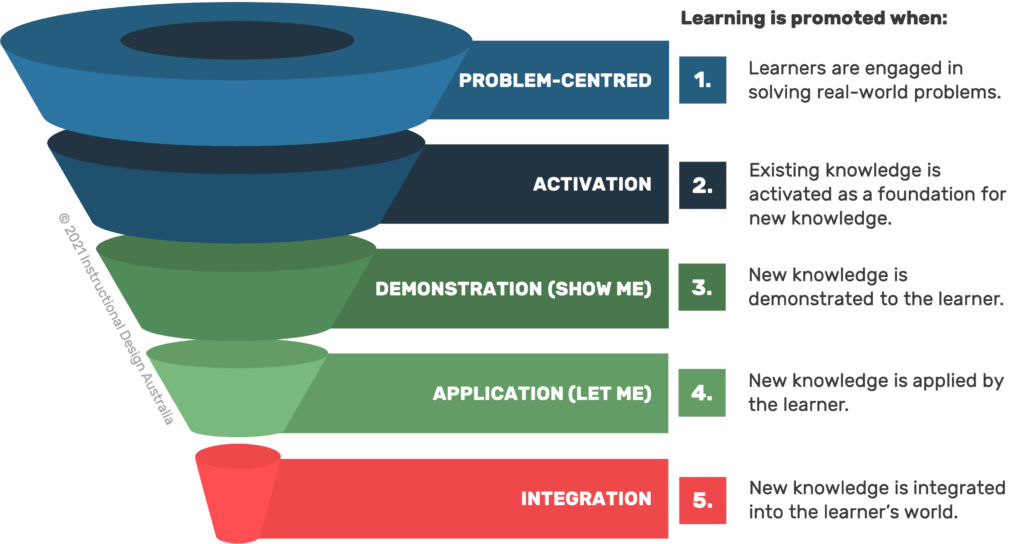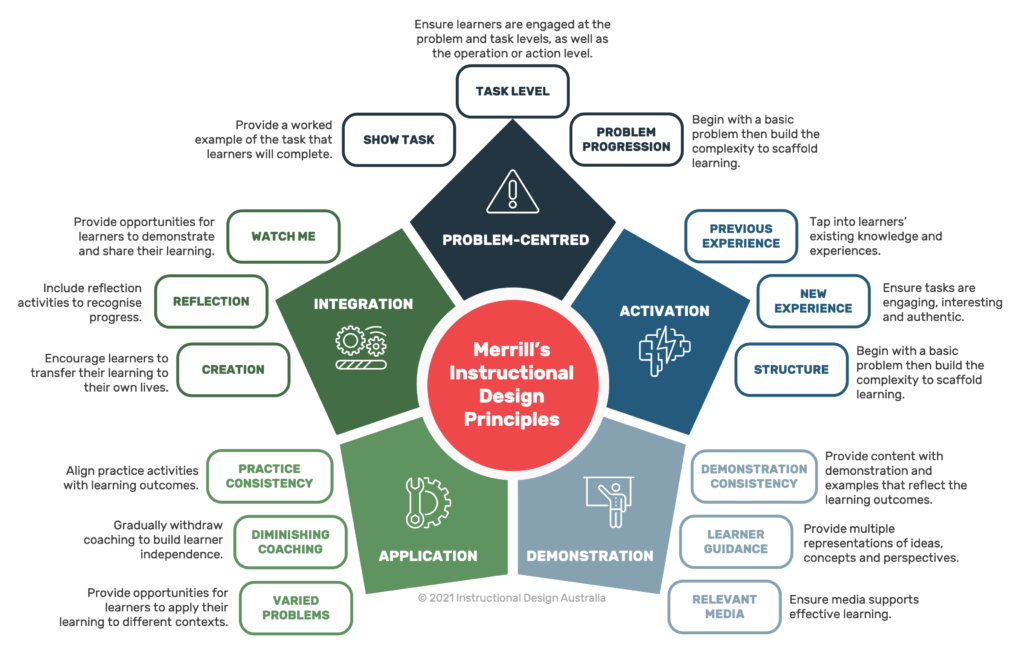
David Merrill, a renowned researcher of education, reviewed many learning design theories. His findings identified commonalities across instructional design theories. These shared beliefs formed the base of his own instructional design theory – Merrill’s first principles of instruction.
Merrill proposed learning is promoted when instruction:

Adapted from First principles of instructional design, 2002.
Merrill broke the five principles down into further detail.
Show Task: Provide a worked example of the task that learners will complete.
Task Level: Ensure learners are engaged at the problem and task levels, as well as the operation or action level.
Problem Progression: Begin with a basic problem then build the complexity to scaffold learning.
Previous Experience: Tap into learners’ existing knowledge and experiences.
New Experience: Ensure tasks are engaging, interesting and authentic.
Structure: Begin with a basic problem then build the complexity to scaffold learning.
Demonstration Consistency: Provide content with demonstration and examples that reflect the learning outcomes.
Learner Guidance: Provide multiple representations of ideas, concepts and perspectives.
Relevant Media: Ensure media supports effective learning.
Practice Consistency: Align practice activities with learning outcomes.
Diminishing Coaching: Gradually withdraw coaching to build learner independence.
Varied Problems: Provide opportunities for learners to apply their learning to different contexts
Watch Me: Provide opportunities for learners to demonstrate and share their learning.
Reflection: Include reflection activities to recognise progress.
Creation: Encourage learners to transfer their learning to their own lives.

Adapted from First principles of instruction, 2002. [2], and First principles of instruction: A synthesis, 2007 [3].
Merrill’s First Principles have been aligned to many other principles of instructional design, including Clark and Mayer’s Principles for eLearning, Allen’s eLearning Principles and Minimalist Instruction [4].
Click on the links below to learn more about instructional design.
Read more of our blog articles here.
[1][2] Merrill, M. D. (2002). First principles of instruction. Educational technology research and development, 50(3), 43-59.
[3] Merrill, M. D. (2007). First principles of instruction: A synthesis. Trends and issues in instructional design and technology, 2, 62-71.
[4] Merrill, M. D., Barclay, M., & van Schaak, A. (2008). Prescriptive principles for instructional design. Handbook of research on educational communications and technology, 3, 173-184.
We provide learning design and instructional design services in Melbourne, Sydney, Perth, Adelaide, Brisbane, Canberra and South East Asia. Contact us today for an obligation-free conversation about your project.
1300 528 736